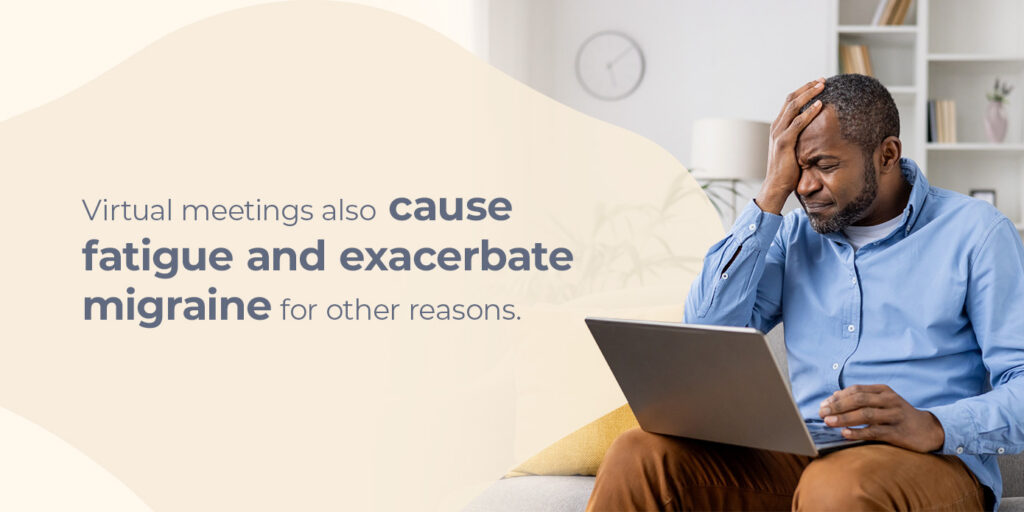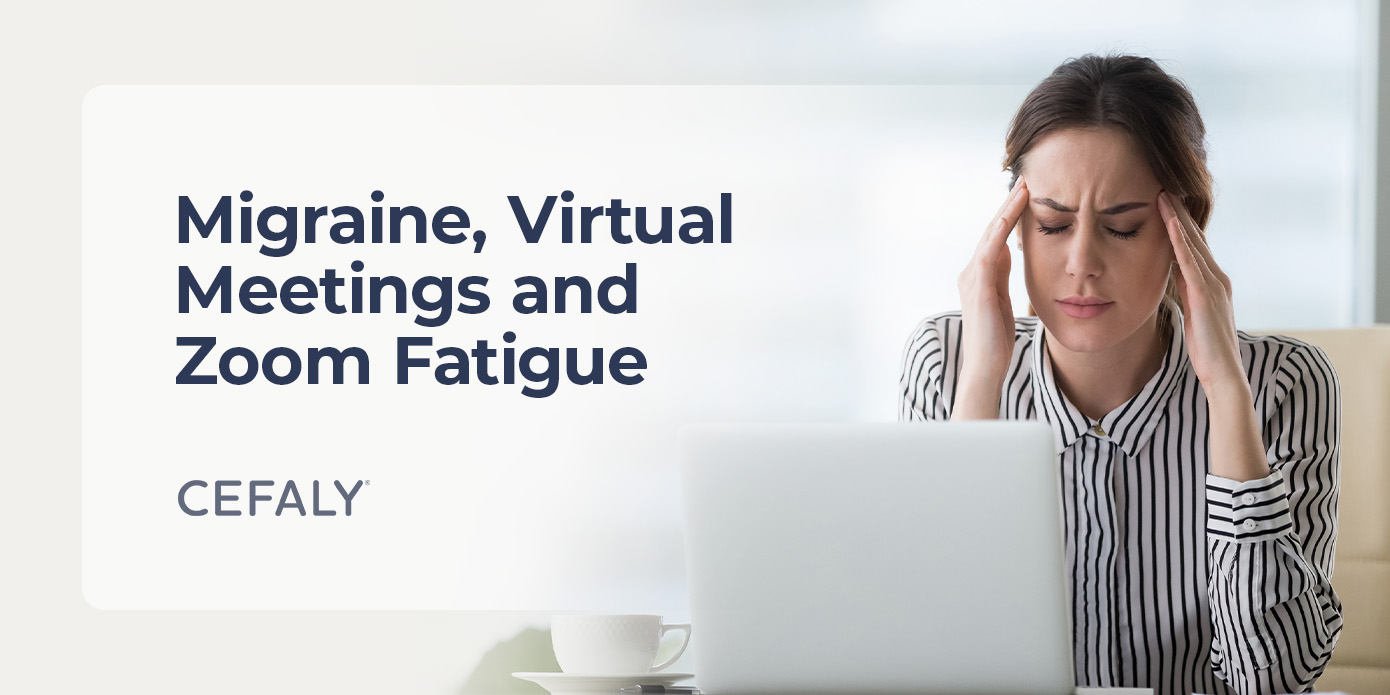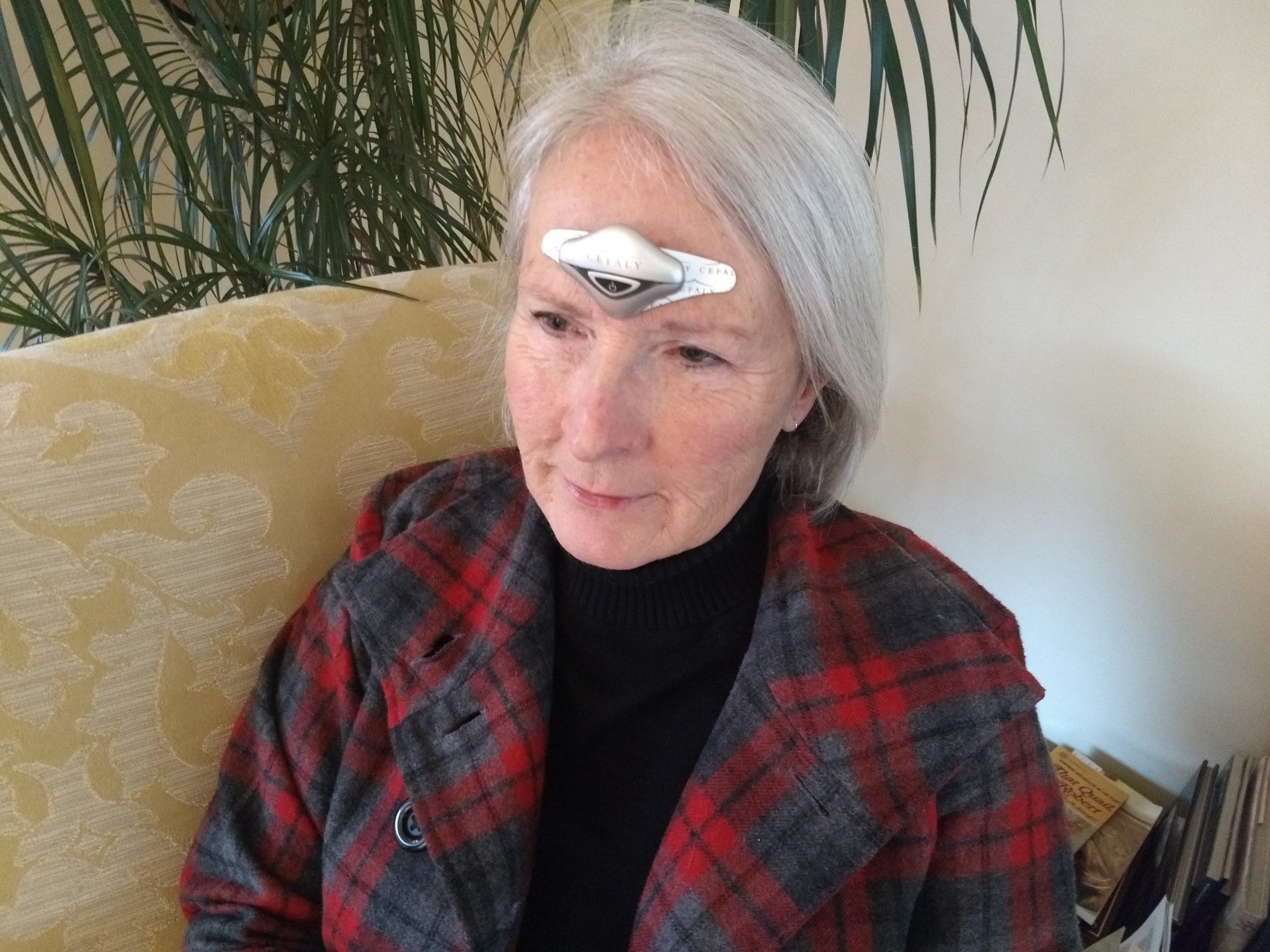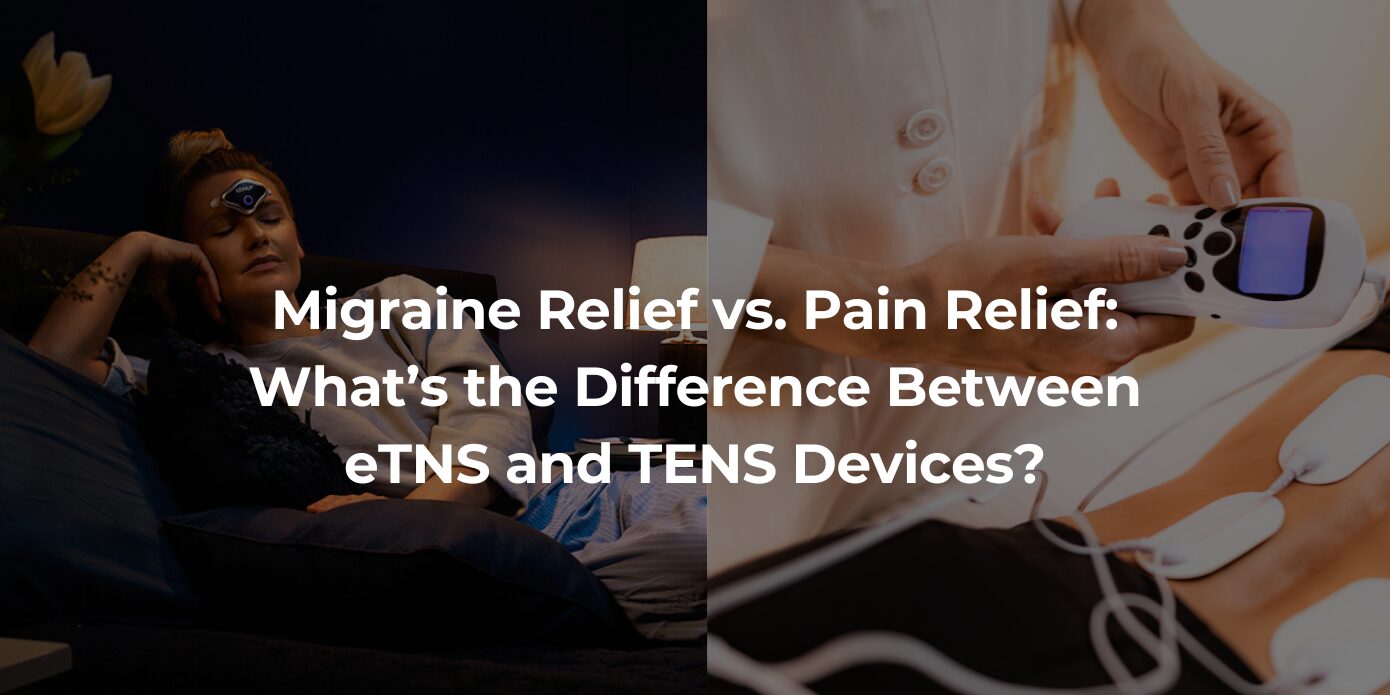Videoconferencing benefits hundreds of millions of remote workers and learners worldwide, dramatically increasing virtual meetings and daily screen time. Though some people thrive in virtual meetings, others — particularly migraine sufferers — may struggle from sitting through too many. This phenomenon has earned the nickname “Zoom fatigue.”
Virtual meetings can lead to discomfort, a lack of enthusiasm or an increase in migraine attacks. Thankfully, you can improve your experience and return to feeling like your usual self with the advice in this guide.
What is Zoom fatigue?
Zoom fatigue is similar to burnout, an overwhelming exhaustion that can affect you emotionally, mentally and physically. While all work-related stress can be tiring, Zoom fatigue is unique to virtual meetings.
Despite the association with Zoom, you can experience this condition from any videoconferencing platform. It may not be a medical condition, but it is a real issue that can make you feel exhausted and drained. About 26% of people in a study about videoconferencing say they feel worn out by too many virtual meetings. Familiarizing yourself with the symptoms can help you overcome Zoom fatigue quickly.
Zoom fatigue symptoms
Everyone has different experiences with Zoom fatigue, but people often report similar symptoms.
- Eye strain: Looking at screens for too long can make your eyes tired, dry and sore. Your eyes constantly shift focus while looking at screens up close, and you may blink less frequently without noticing. Screen brightness also contributes to eye strain.
- Stress: People often use video calls for meetings with their colleagues, which tend to be stressful even if the conversation is friendly and upbeat. This stress can lead to anxiety, irritability and mood swings.
- Headaches and muscle tension: Focusing too long on your screen can cause headaches behind your eyes. Hunching over a laptop all day can also lead to poor posture and chronic back, neck and shoulder pain.
- Migraine attacks: Migraineurs may have more frequent migraine attacks from excessive video calls. A common migraine trigger is stress, which you may feel after a long meeting or several back-to-back videoconferences. Migraine is different from a typical headache because it brings additional symptoms like mood changes, sensitivity to light, nausea and head pain.
- Body aches: Sitting in virtual meetings can make your body sore. People also tend to move less to stay within the video frame, leading to extra discomfort.
- Fatigue: You may feel overwhelmingly tired and drained after video calls. It’s more than sleepiness — fatigue can make you feel like you have no energy or motivation to do anything. You may also struggle to focus and concentrate.
Get Drug-Free Migraine Relief With CEFALY
Shop Now
90-day money back guarantee
FDA-cleared
financing available
What causes Zoom fatigue?
Video calls differ from participating in an in-person meeting or talking to someone individually. They require you to sit still in front of a screen and watch yourself speak — an unnatural experience for many of us. While the physical effects of screen time and lack of movement can make you uncomfortable, virtual meetings also cause fatigue and exacerbate migraine for other reasons.

1. Cognitive load
Cognitive load refers to how much information your brain can process at once. During virtual meetings, you receive a lot of input from listening to people and seeing everyone’s faces. You’re also monitoring yourself on screen and possibly multitasking. Plus, other stimuli in your environment — like your dog barking or your child asking for a snack — can further distract and overload you.
Reading facial expressions and nonverbal cues is also harder in a video meeting. In real-life conversations, people use their tone, hands, facial expressions and body language to communicate and convey meaning. The small video frames can limit your view of the person, making it harder to understand them. All of this takes a lot of energy and mental exertion, which can be draining over long periods.
2. Mirror anxiety
During most video calls, you can see yourself beside the person you’re talking to, which can cause a phenomenon called mirror anxiety. Many people feel uncomfortable in virtual meetings because they analyze themselves and their flaws.
The ability to see yourself while talking can be stressful. You might wonder how others perceive you or exaggerate your facial expressions to show others you’re engaged and listening. If you’re unhappy with your appearance that day, seeing your flaws during the call might make you feel worse. These factors can adversely affect your mental health and lead to fatigue.
3. Eye contact
Excessive eye contact is another factor that contributes to Zoom fatigue. In real-life meetings, everyone usually focuses on one person at a time. As a listener, you can shift your focus and look away. In a Zoom call, it may feel like everyone is staring at you all the time, even if they’re not. Having all this eye contact right in front of you can lead to feelings of unease and anxiety, which is stressful for people with migraine.
How to avoid Zoom fatigue
Fortunately, you can use multiple strategies to overcome Zoom fatigue. Try the following tactics to see if they help you.
- Change your view: Turning off “self view” and changing to “speaker view” can help you feel more comfortable and less anxious during calls.
- Take breaks: Look away from the screen occasionally during calls to give yourself and your eyes a break. After a meeting, get up and walk around for a bit to stretch and change scenery.
- Schedule calls: Sudden, unexpected calls can increase stress. Ask others to respect your time by scheduling meetings instead of calling you unexpectedly.
- Adjust lighting: Bright lights and glare can increase eye strain. To avoid this problem, make your room lighting softer and less intense. Reduce overhead lights and move your monitor away from windows. You can also turn down your screen brightness and wear migraine glasses to reduce light sensitivity.
- Sit back: Sitting comfortably at the correct distance from your computer can reduce eye strain and body aches. Your monitor should be about 50 inches away from your face, and the top should sit just below eye level.
- Look after yourself: A lack of sleep, poor diet and dehydration can worsen Zoom fatigue and migraine. Try the tips above and practice self-care to avoid burnout and reduce migraine attacks.
Reduce migraine from virtual meetings with CEFALY
You may benefit from using a CEFALY device if you often get migraine attacks from video calls. CEFALY is a drug-free, FDA-cleared migraine treatment that targets the trigeminal nerve — the primary pathway for migraine pain. With its ACUTE and PREVENT modes, you can relieve pain as it occurs and reduce attacks in the future. It’s so effective that in one study, 79% of CEFALY users said they had pain relief from our devices after just one hour of treatment.
Get your life back today by purchasing a CEFALY device. We offer a 90-day money-back guarantee, so you can try it risk-free.















